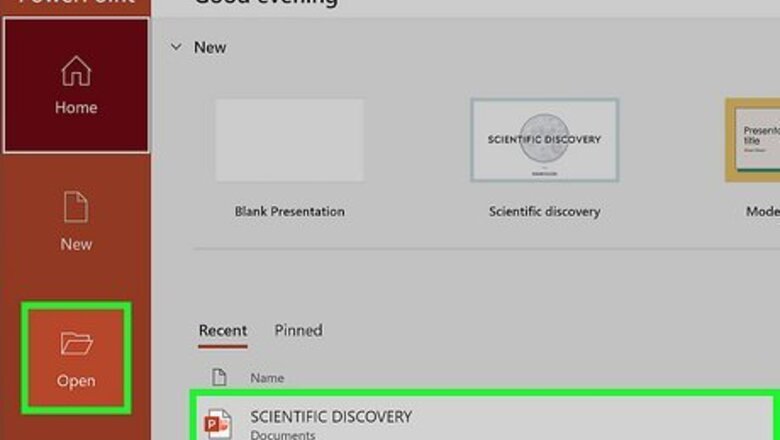
views
- Copy a YouTube URL. In PowerPoint, click "Insert' → "Video" → "Online Videos/Movie". Paste the URL and click "Insert".
- To embed a video file, click "Insert" → "Video" → "This Device" → select a file → "Insert".
- To use a stock video, click "Insert" → "Video" → "Stock Videos" → select a video → "Insert".
Embedding a Web Video
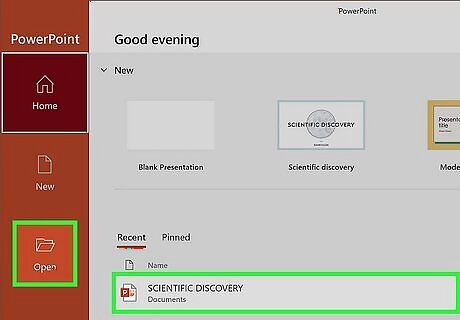
Open a project in Microsoft PowerPoint. This looks like a P on top of an orange circle. Microsoft PowerPoint is available to install for Windows and Mac. You must have a subscription to use Office 365. Adding a video to your PowerPoint can help you make a great presentation.
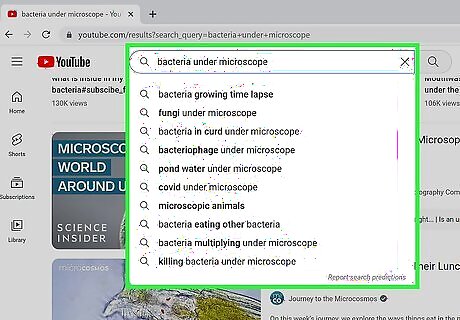
Find a web video you want to insert. You'll need the URL for the video. You can insert a video from supported websites such as: YouTube, SlideShare, Vimeo, Microsoft Stream, and Flip.

Copy the URL of the video. Highlight the entire URL, and then press CTRL + C (Windows) or CMD + C (Mac) on your keyboard to copy. You can also right-click the URL and click Copy.

In PowerPoint, click Insert. This will be at the top toolbar, between Home and Draw.
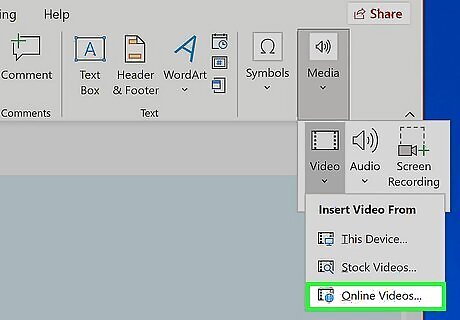
Click Video, then Online Videos. A new window will open. On Mac, this will look like Online Movie.
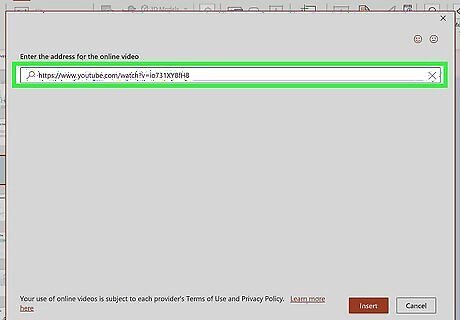
Paste the URL into the field. Press CTRL + V (Windows) or CMD + V (Mac) to paste. The field will have a magnifying glass icon on the left side. You'll see a preview of the video.

Click Insert. This will be at the bottom-right corner.
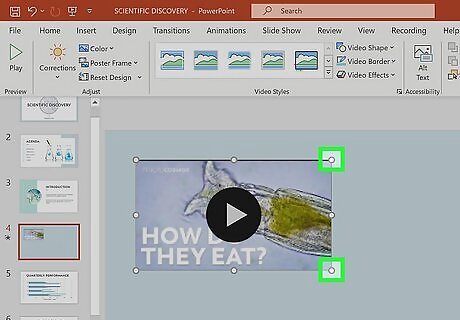
Adjust the embedded video. Click and drag any of the circles on the perimeter of the video to increase or decrease its size. If you want to change the position on the slide, click and drag the video to a new position.
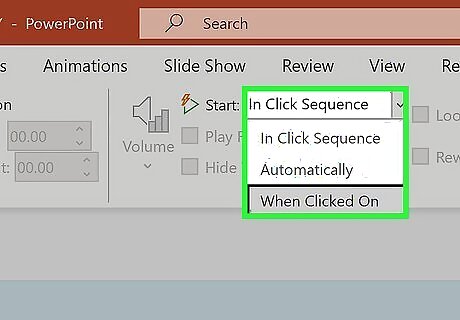
Adjust the playback settings. Select the video and click the Playback tab. You'll be able to edit how your video plays on the slide. To adjust when the video plays, click the drop-down menu next to Start:. Select In Click Sequence, Automatically, or When Clicked On. Check the boxes to apply any of the following: Play Full Screen, Hide While Not Playing, Loop until Stopped, and/or Rewind after Playing. Click Volume to adjust the video's volume. Select Low, Medium, High, or Mute.
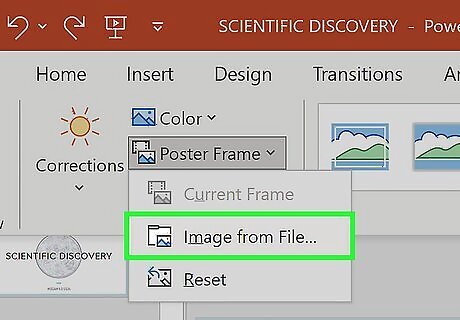
Edit the video image (optional). By default, the video will have the creator's thumbnail as the image when the video isn't playing. If you want to change it, you can insert a new picture using a file from your computer, a stock image from the library, through online sources, or from Microsoft's icon collection. To change the picture: Select the web video and click the Video Format tab. Click Poster Frame on the left of the toolbar. Click Image from File…. Select From a File, Stock Images, Online Pictures, or From Icons. Select the image source from the chosen method, and then click Insert.
Embedding a Video File
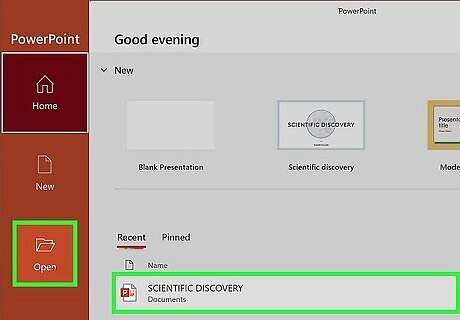
Open a project in Microsoft PowerPoint. This looks like a P on top of an orange circle.
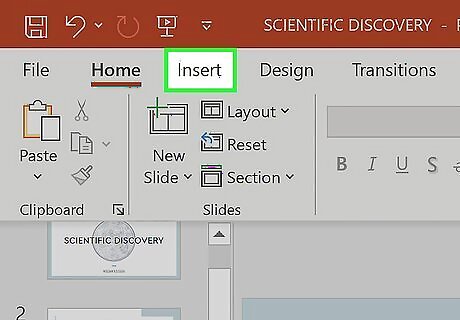
Click Insert. This will be at the top toolbar, between Home and Draw.

Click Video, then This Device. A new window will open.
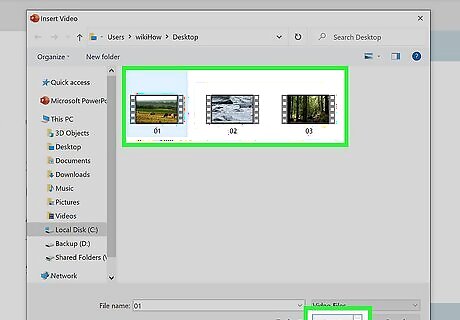
Select the video file and click Insert. Use the File Explorer or Finder to find your file. If needed, you can transfer videos from your camera.

Adjust the embedded video. Click and drag any of the circles on the perimeter of the video to increase or decrease its size. If you want to change the position on the slide, click and drag the video to a new position.
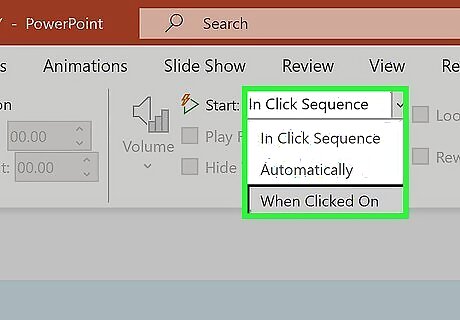
Adjust the playback settings. Select the video and click the Playback tab. You'll be able to edit how your video plays on the slide. To adjust when the video plays, click the drop-down menu next to Start:. Select In Click Sequence, Automatically, or When Clicked On. Check the boxes to apply any of the following: Play Full Screen, Hide While Not Playing, Loop until Stopped, and/or Rewind after Playing. Click Volume to adjust the video's volume. Select Low, Medium, High, or Mute.

Edit the video image (optional). By default, the video will have the creator's thumbnail as the image when the video isn't playing. If you want to change it, you can insert a new picture using a file from your computer, a stock image from the library, through online sources, or from Microsoft's icon collection. To change the picture: Select the web video and click the Video Format tab. Click Poster Frame on the left of the toolbar. Click Image from File…. Select From a File, Stock Images, Online Pictures, or From Icons. Select the image source from the chosen method, and then click Insert.
Embedding a Stock Video

Open a project in Microsoft PowerPoint. This looks like a P on top of an orange circle. Stock videos work best as a background graphic to your PowerPoint text, since these videos loop seamlessly

Click Insert. This will be at the top toolbar, between Home and Draw.

Click Video, then Stock Videos. A new window will open.
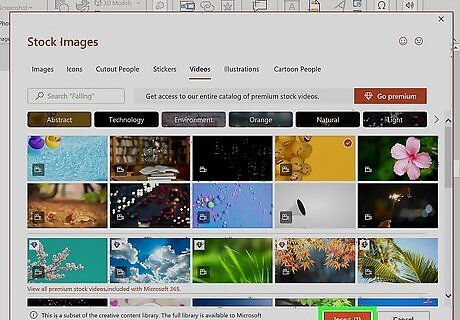
Select a stock video and click Insert. You can freely browse the selection below, or you can enter a specific keyword to narrow your search. The stock video will be added to your slide. By default, it will cover the entire slide.
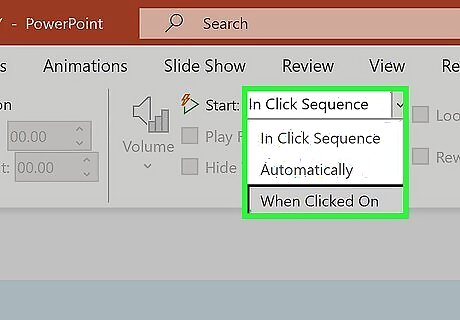
Adjust the playback settings. Select the video and click the Playback tab. You'll be able to edit how your video plays on the slide. To adjust when the video plays, click the drop-down menu next to Start:. Select In Click Sequence, Automatically, or When Clicked On. Check the boxes to apply any of the following: Play Full Screen, Hide While Not Playing, Loop until Stopped, and/or Rewind after Playing. Click Volume to adjust the video's volume. Select Low, Medium, High, or Mute.
Using Android
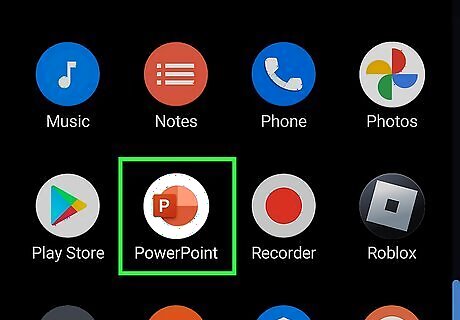
Open a project in the PowerPoint app. This looks like a P on top of an orange circle. PowerPoint is available for Android in the Google Play Store.
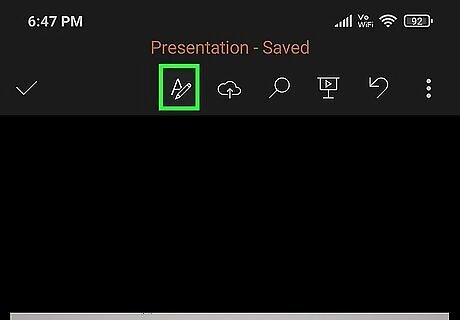
Tap the menu icon. This looks like a pencil icon in front of an A at the top. The menu will open.

Tap Home. This will expand the other selections.
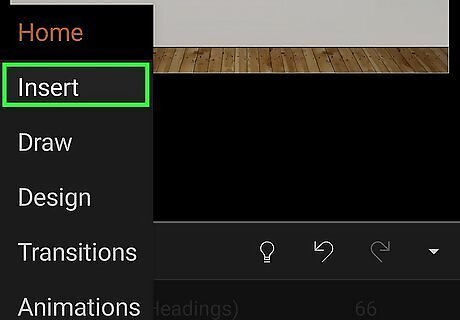
Tap Insert. This will be underneath Home.
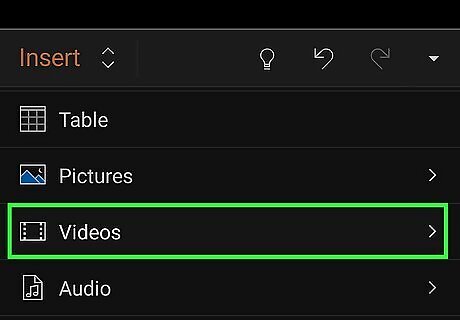
Tap Videos. You may need to scroll down to find this option.

Select a video file from your device. You can use a .mp4 or .mkv file. If you want to take a video using your camera, tap Open Camera instead. The video file will be added to your PowerPoint.
Linking Movie Files (PowerPoint 2007)

Place the movie file in the same directory as the PowerPoint file. If you're using PowerPoint 2007 or earlier, movie files are not embedded, they're "linked." This means that the video is not actually included in the PowerPoint presentation file. The video file exists separately from the presentation file, and the presentation loads the video file from the specified location. You won't see a literal hyperlink, but PowerPoint will need to have an accurate location of the video on the computer in order to play it. Videos can only be "embedded" (included in the presentation file itself) in PowerPoint 2010 or newer.
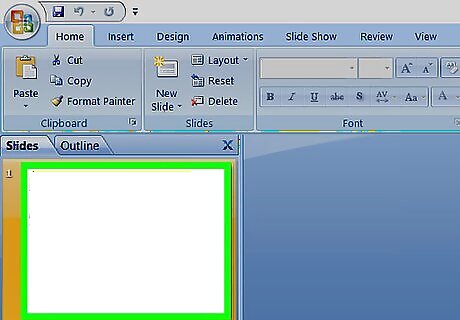
Open the slide you want to add the video to. You can add videos to any slide in your PowerPoint presentation.
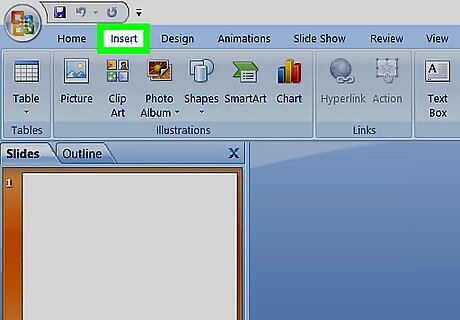
Click the "Insert" tab. This will display various options for inserting objects into your presentation.

Click the "Movie" button and select "Movie from File." This will open your file browser so that you can select your movie file.
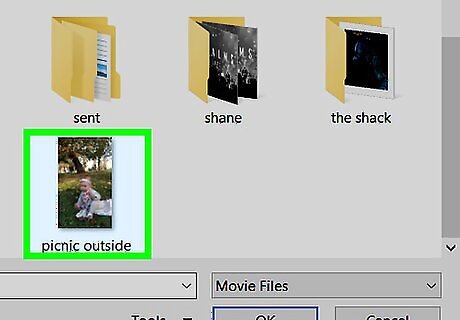
Browse for the video file you want to link to. PowerPoint 2007 only supports a handful of video formats, including AVI, MPG, and WMV. If you're using AVi files, you may want to convert them to MPG or WMV first to avoid codec issues when trying to play the video.

Select how you want the video to start playing. Once you've selected the video, you'll be prompted to select how you want it to start playing. If you select "Automatically," the video will begin playing as soon as the slide opens. If you select "When Clicked," you'll need to click the video to begin playing it.
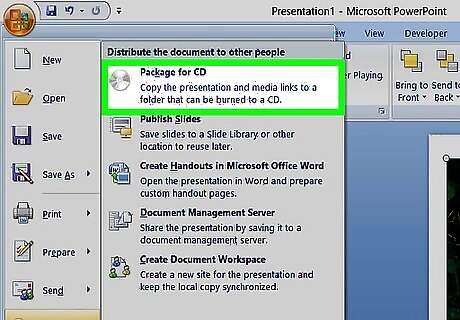
Use the "Package for CD" feature if sending the presentation. Since your video plays from a specific location, recipients won't be able to watch it if you send them the presentation unless you send the video too. Using the "Package for CD" feature allows you to send the presentation and any associated media as one package. Click the Office button and select "Publish." Select "Package for CD" and then select your presentation. Ensure that "Linked files" is selected in the "Options" menu.




















Comments
0 comment